The first wall lamps appeared when someone stuck a burning stick into a crevice in the wall. In the Middle Ages, torches were widely used, which were inserted into special wall or floor mounts. And then in the 17th century in Italy, candlesticks appeared on brackets that looked like an animal paw or a human hand. France picked up the idea, and even gave such a design the name "sconce", which means "support" and "hand" in translation. Let's discuss how to choose the right wall lamp for your apartment.
Wall lighting fixtures are structures that are attached to the wall. There are also built-in furniture lamps - they are not included in this category. Depending on the method of fastening, there are:
- surface luminaires that fit snugly against the wall with the back cover of the housing. A protruding plastic or glass cover can be round, oval, semicircular, square and other shapes. There are even wall lamps-photo frames;


- fixtures on brackets (sconces), which can change the direction of light, and therefore much more convenient than near-surface lighting fixtures.
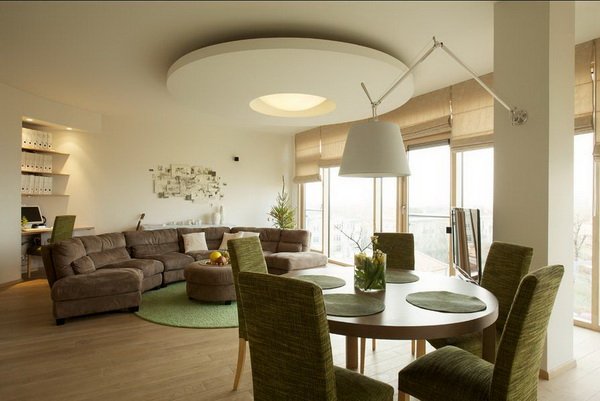
Also, "spots" can be attributed to wall lamps ( Spotlights directional light) and recessed luminaires of various shapes with halogen lamps.

Glass, crystal, wood, plastic and even paper are used for the manufacture of ceiling lamps, and for the manufacture of the main part - ceramics, gypsum, wood, as well as metal coated with a coating that imitates bronze, gold, silver surfaces. Wall lamps use incandescent lamps, fluorescent lamps, LEDs.
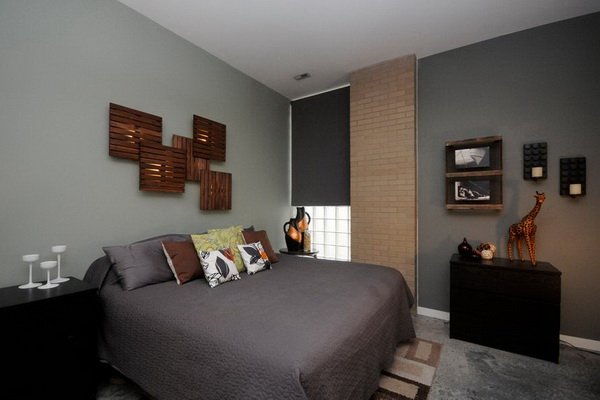
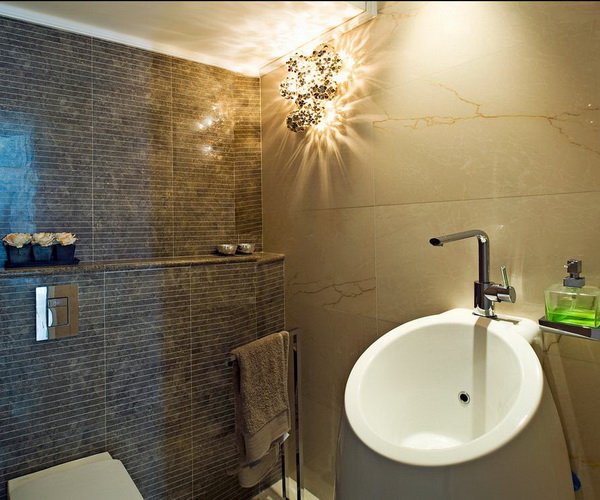
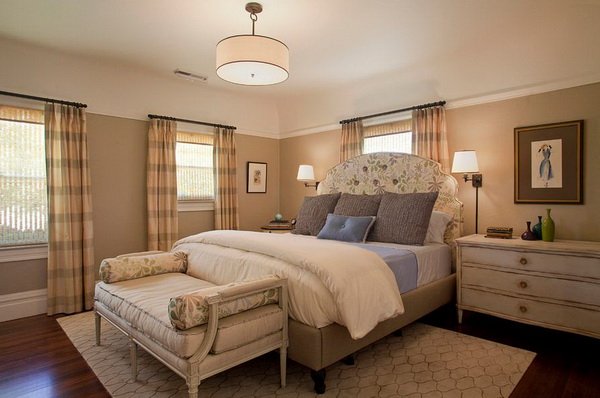
Wall lamps combine functional and decorative functions. They are helping:
1. Visually adjust the size of the room and the height of the ceilings. To make the room more spacious will help the rejection of central lighting (chandeliers) and a number of lighting fixtures located along one of the walls. If the ceiling is very low, then it is necessary to place wall lamps at the very top, along the entire perimeter. In this case, the light flux should be directed upwards in order to increase the illumination due to the reflectivity of the white ceiling.

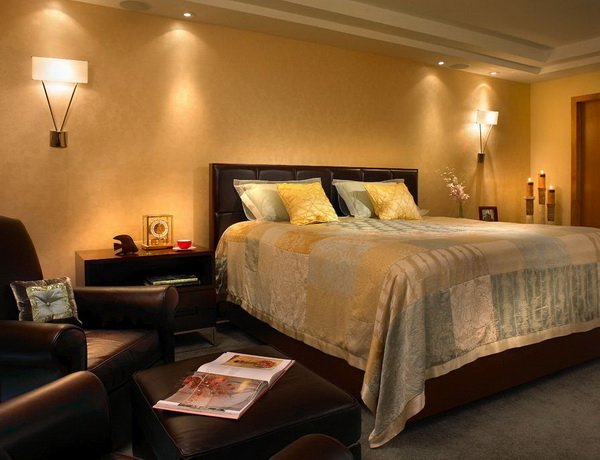
2. For division into functional zones. For this, it is necessary to use fixtures of the same type, but different color or size. This will allow you to well illuminate one area (for example, the dining room) and completely immerse the other (kitchen) in darkness.
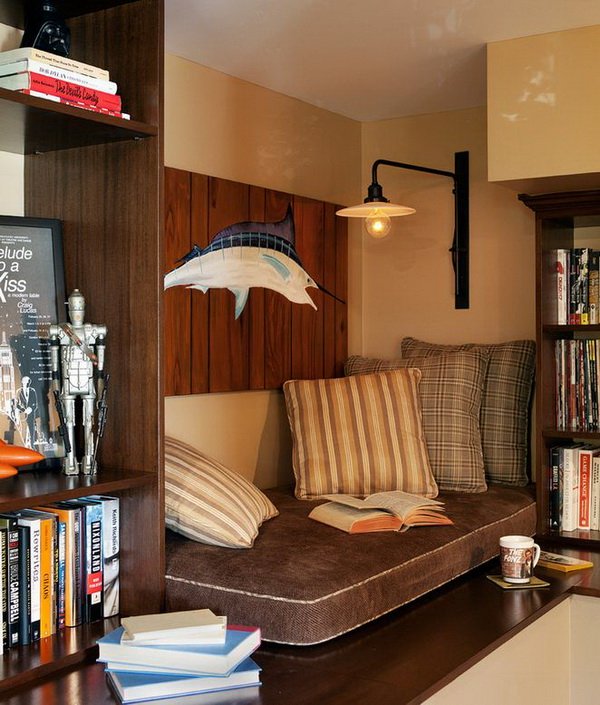
3. To create special effects. Wall lights, located one meter from the floor, create a relaxing and romantic lighting.
4. To increase the level of illumination in a specific area. For example, for high-quality makeup, you need two sconces on either side of the mirror, and for a successful shave, you need light above the mirror.
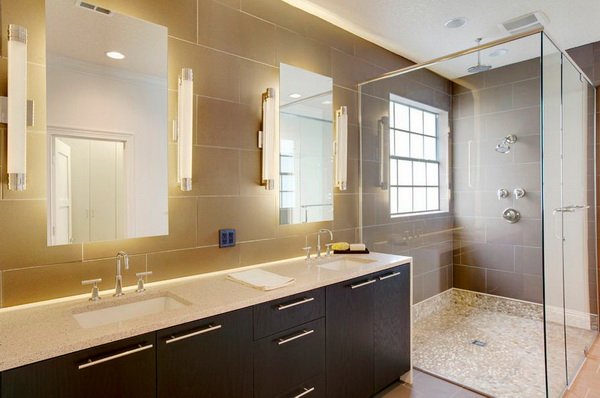
5. To highlight decorative elements, wall niches or accent on finishing materials. Directional light can enhance the beauty of textile or embossed wallpaper, the texture of wood, or the sheen of Venetian plaster. All collectibles, as well as sculptures and paintings, deserve special highlighting with spotlights.
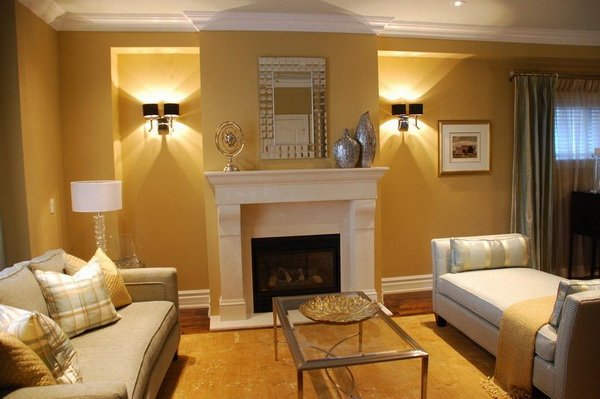

6. As a decorative element of the interior. For example, flat built-in lamps can be used to illuminate the head of the bed or make an original mirror frame out of them.
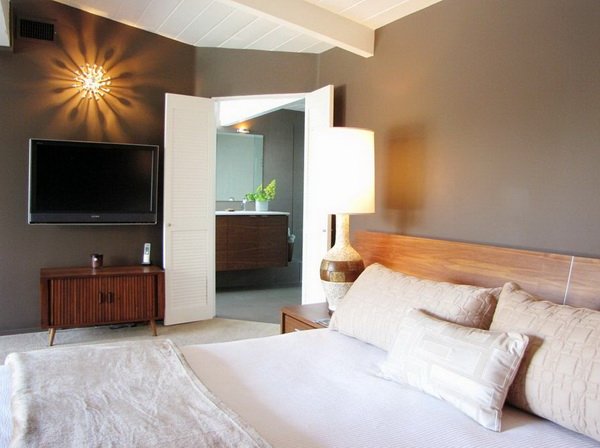

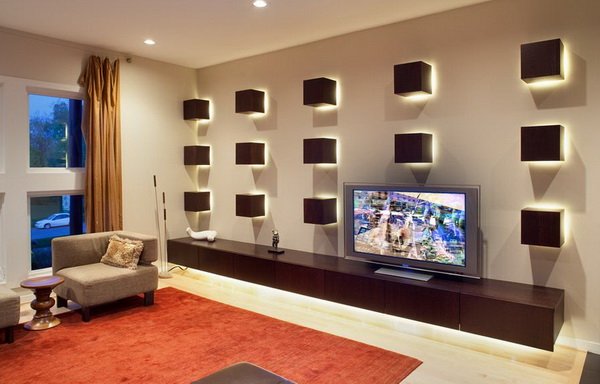
In the living room - in the reading corner, next to the armchair (alternative - a floor lamp), as well as on both sides above the mantelpiece. In the bedroom - on both sides of the head of the double bed and next to the dressing table. In the nursery - next to the bed and desk. In the bathroom, you need to illuminate the washing area, and in the kitchen - the cooking area and the dining area. In the corridor, you can fix a number of lamps at a height, just above human height, and opposite the mirrors, in order to visually expand the space.

Basic rules for interior design:
In spacious rooms, a wall lamp plays the role of additional lighting, and in small ones it is the main one if there is no chandelier in the room.
In order for the lamps to effectively distribute the luminous flux, it is necessary to fix them at a height above human height, about two meters from the floor.
If you need soft diffused light, then it is better to choose lamps with matte shades.
For harsh lighting, install a sconce with a downward beam of light.

Lamps should match the chosen interior style, as well as be combined with a chandelier. Lighting housings in classical style performed under gilding, bronze, copper, brass, wood with crystal and glass shades. Lamps in a modern style are made "under the metal", in particular chrome and silver, and the ceiling lamps are made in original shapes (glasses, glasses, balls, cubes, etc.). Even more concise and simple lighting fixtures made of metal and glass in the style of hi-tech, futurism, urban. A sconce with a stained glass shade can be installed in an interior in retro or Art Nouveau style. Lamps decorated with forged details will fit into the Gothic style, and plafonds with crystal pendants are a sign of Art Deco. Japanese-style wall lamps are made of wood and translucent paper, which gives a soft diffused light.
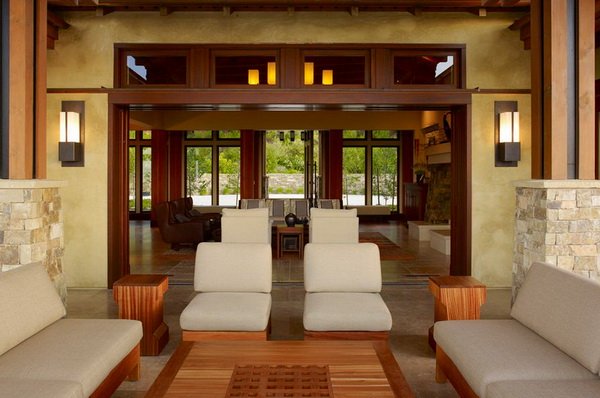

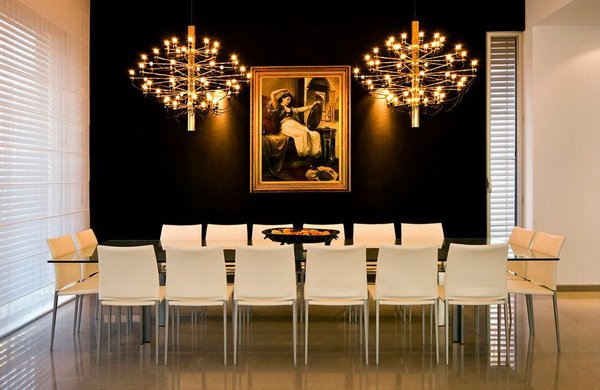
We hope this article will help you choose the right wall lamps for your room.
The simplest example is when wall sconces in the hallway fulfill their intended purpose - they illuminate the entrance area. Simple functionality implies the same execution. Sparing with details and laconic interior uses a minimum of funds, but at the same time remains attractive.
This is an example of how you can make a small entrance hall of a city apartment in the attic, with the help of precisely selected details, to make it harmonious. Even the shape of the plafond exactly "falls" into the geometry of the room - the slope of the edge of the truncated pyramid repeats the line of the window opening.

Here is a simple technique of repetition - a lamp, a hanger, a bench. Simple forms are fully consistent with the decoration of the room - straight lines and angles are everywhere. In addition to the sconce, the banquette also serves as a source of light, which brings some unusualness to the interior.
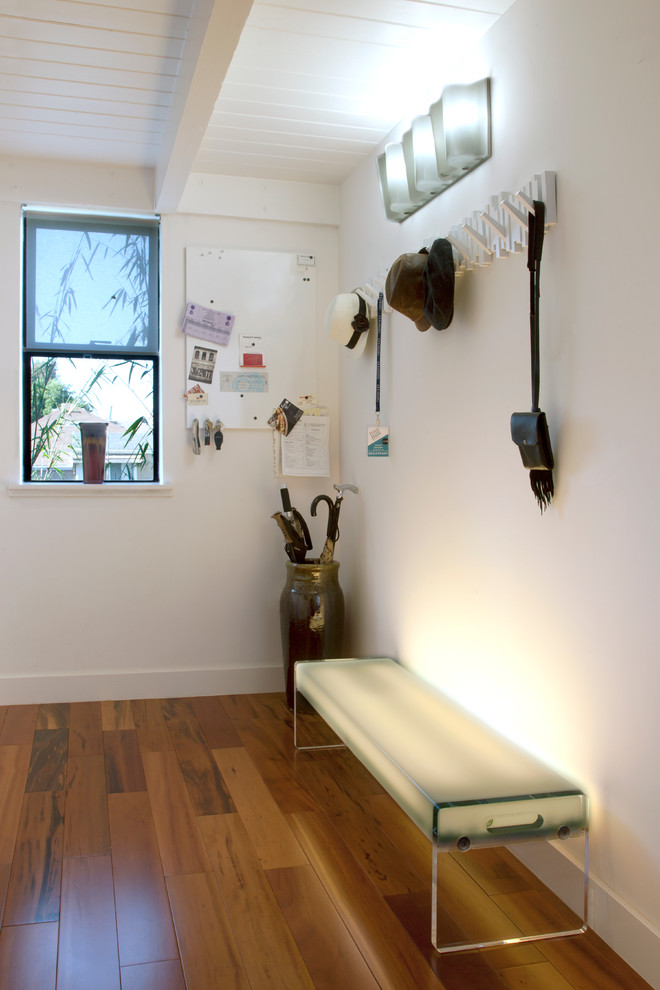
In the next photo, wall lights act as an accent light source. They are aimed precisely at the zone of shelving in the hall where family photos are on the shelves. Already at the entrance you can see that a friendly and happy family lives here.
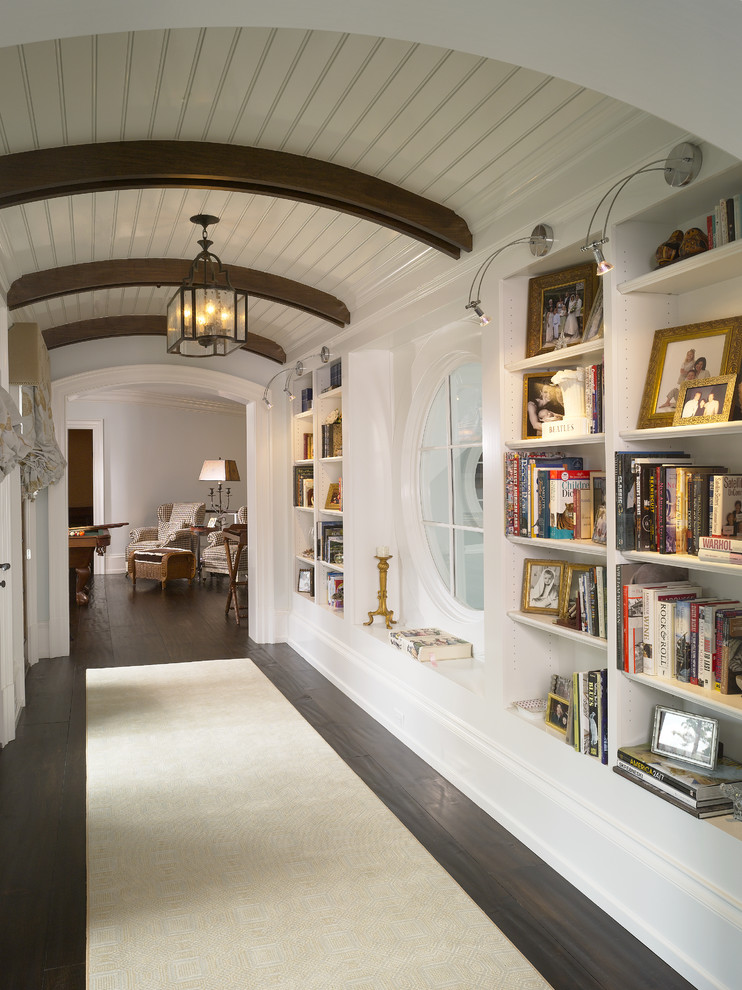
And here you can see the luxury of the classics. More precisely, one of its directions is the Egyptian style. The symmetrical arrangement of furniture corresponds to the double shape of the sconce.

A large hall in the form of a classic enfilade should have the same classic-shaped lamps that resemble either wall candlesticks or torch holders. But in any case, they completely coincide with the antique order of the columns of the piers, and with the form of a few furniture.
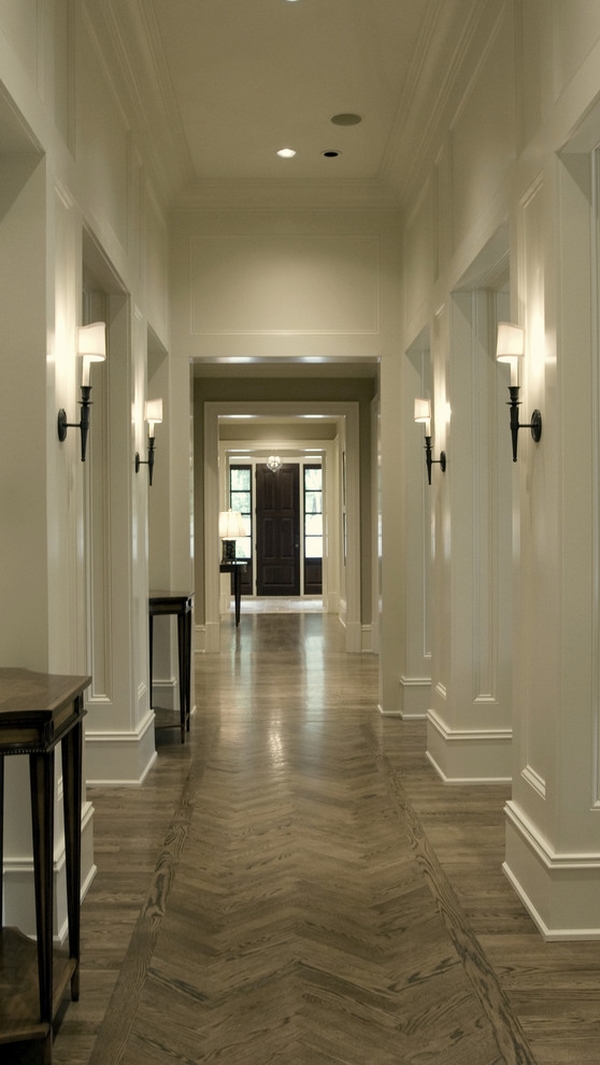
Living room
The living room traditionally uses different variants lighting. This is the only room in which at least two zones were originally laid - dining and relaxation. Therefore, the role of light in creating a certain atmosphere is very important. With a simple switch, you can completely “flood” the room with bright light for a solemn reception of guests or immerse yourself in intimate twilight for a romantic dinner. Therefore, sconces in the interior of the living room can be located not only in the recreation area, but also in the dining room.
The classic style of the living room implies the same style lamps. Symmetrically placed around the fireplace, they create a cozy atmosphere and emphasize its dominant role in the relaxation area.
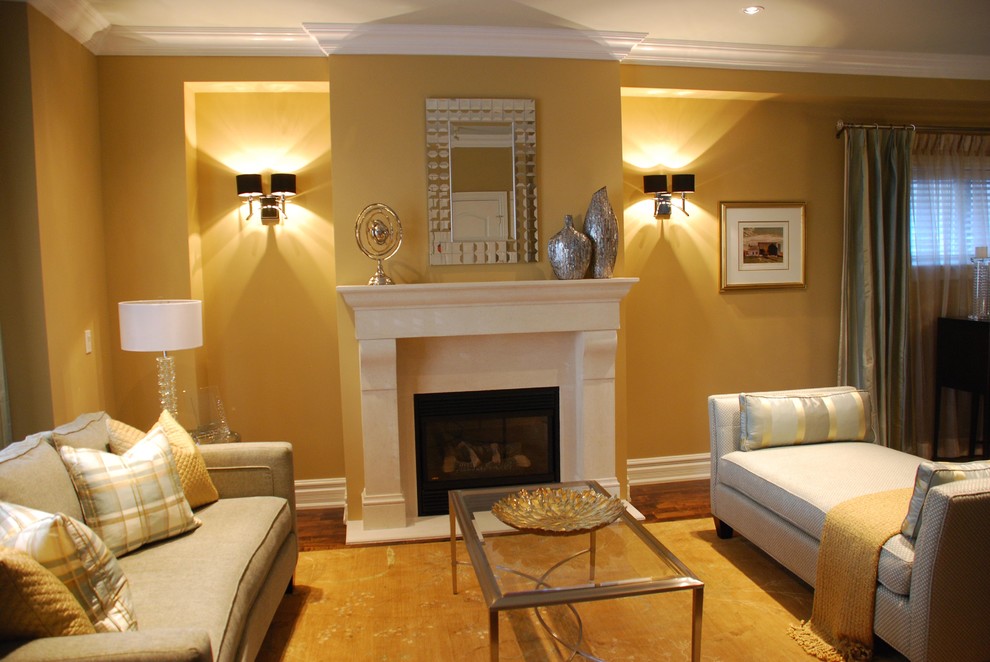
In this case, the same fireplace and upholstered furniture, but in a modern interior style. In this case, not a stationary wall lamp of the usual form is used, but a modern design that allows you to change not only the direction of the light, but even the degree of illumination of the zone - from the general (central) to the target at a certain point.
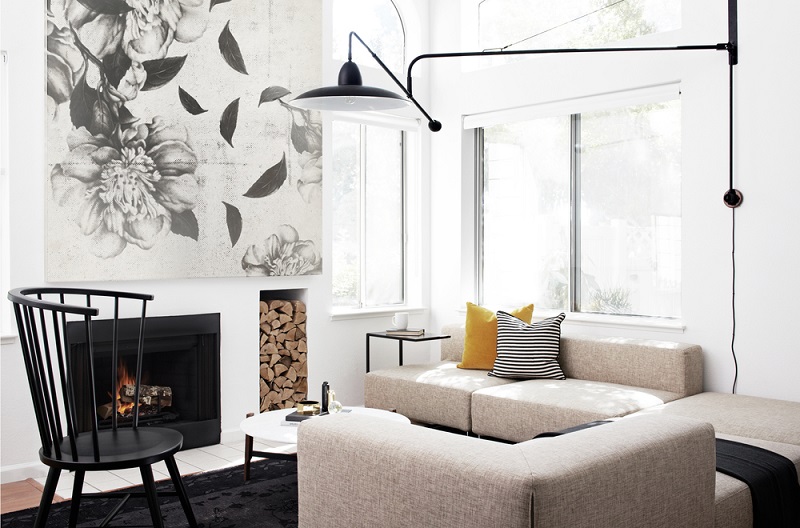
And this is modern in its classical manifestation. A luxurious interior that does not skimp on forms and decorativeness, but at the same time, respecting symmetry in every detail. Including the location of the sconce over the mantelpiece.
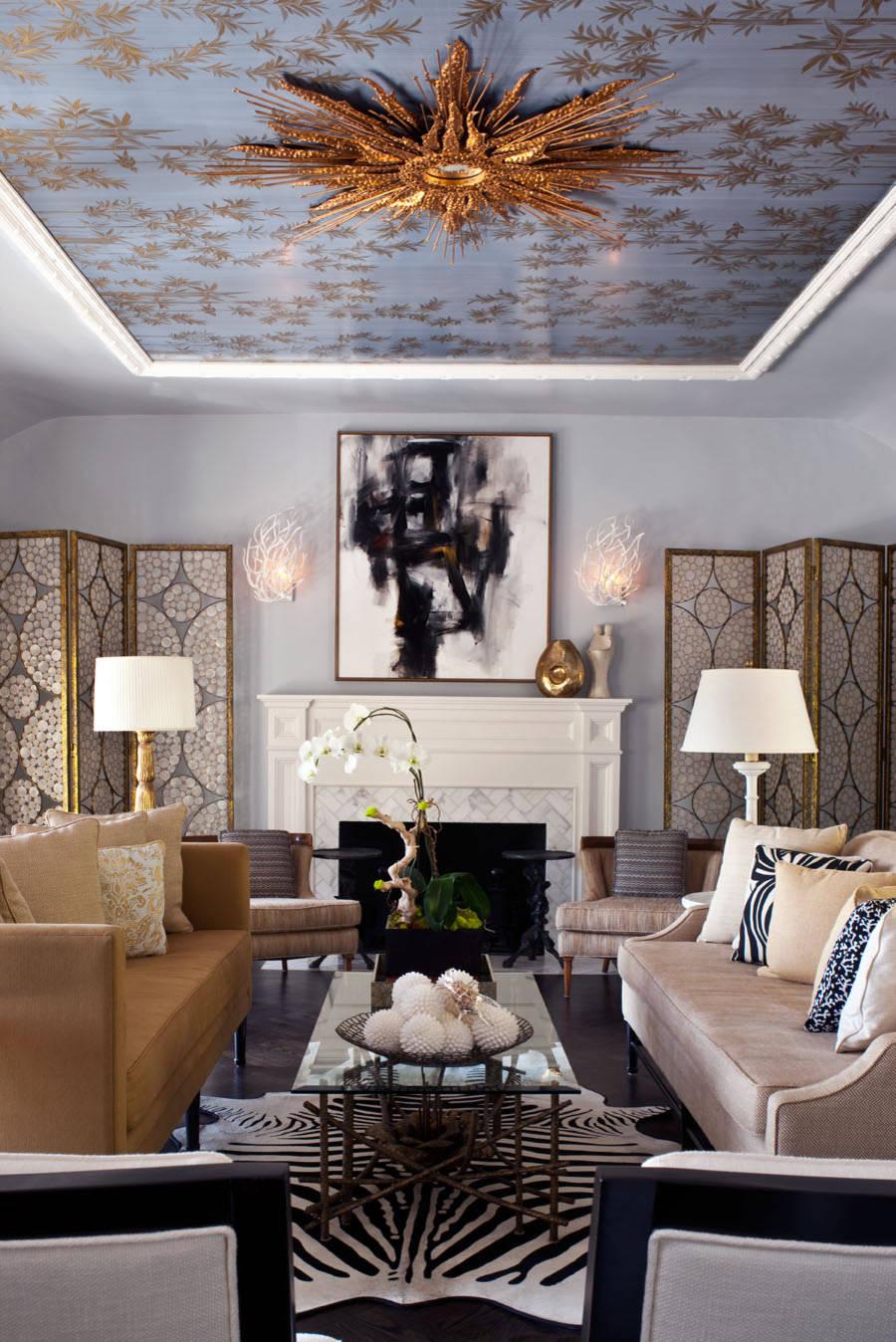
In order to create a central composition in the living room, a fireplace is completely optional. It can be a cozy leather sofa, standing in a niche between the shelves. Two sconces on the swivel console illuminate the seating area in “chocolate tones” and focus on the appliqué painting.
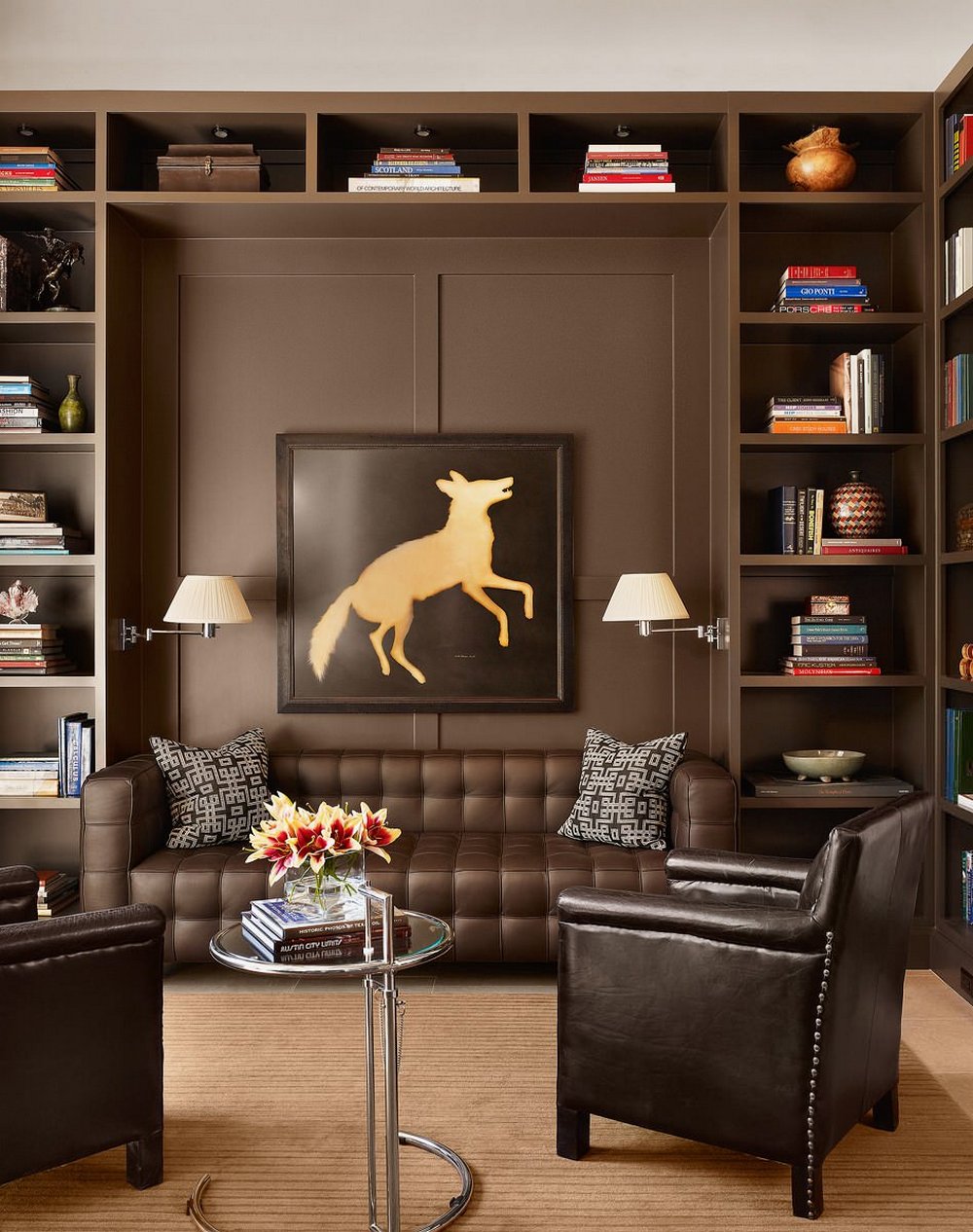
A completely unexpected solution is the use of wall lamps as the main light sources. This photo shows that together they are much brighter than the ceiling spot lamps. And their alternation with paintings creates a special decorative effect.
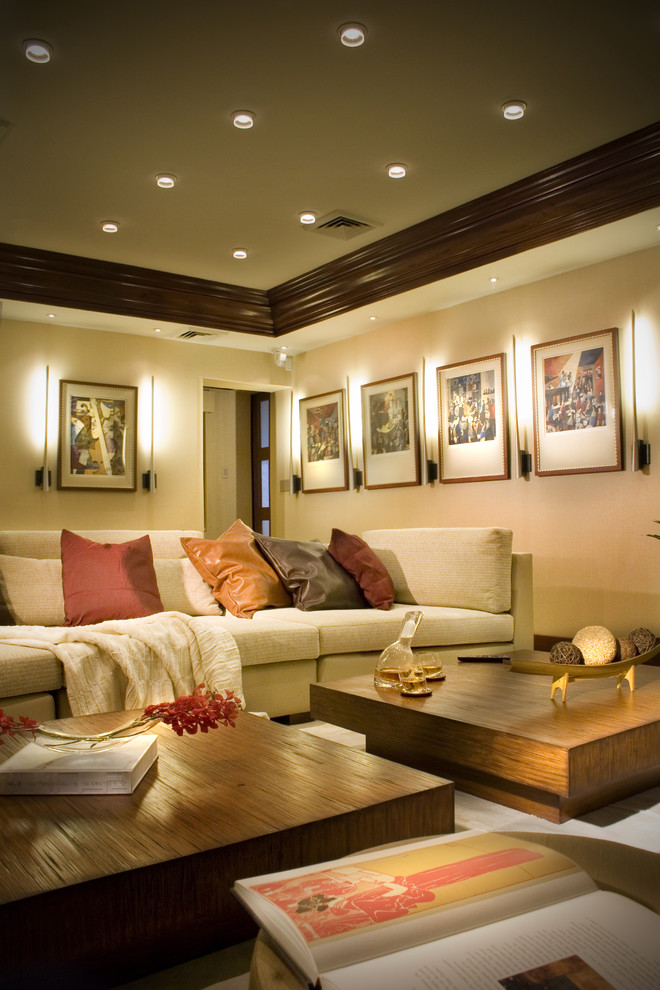
This is a serving corner of the dining area. Traditional style of furniture, crystal pendants of two sconces, leather banquet chairs - symmetry and harmony. But this is not a classic, but a modern style, which emphasizes two reproductions and a figurine. Everything is in tone and nothing more.
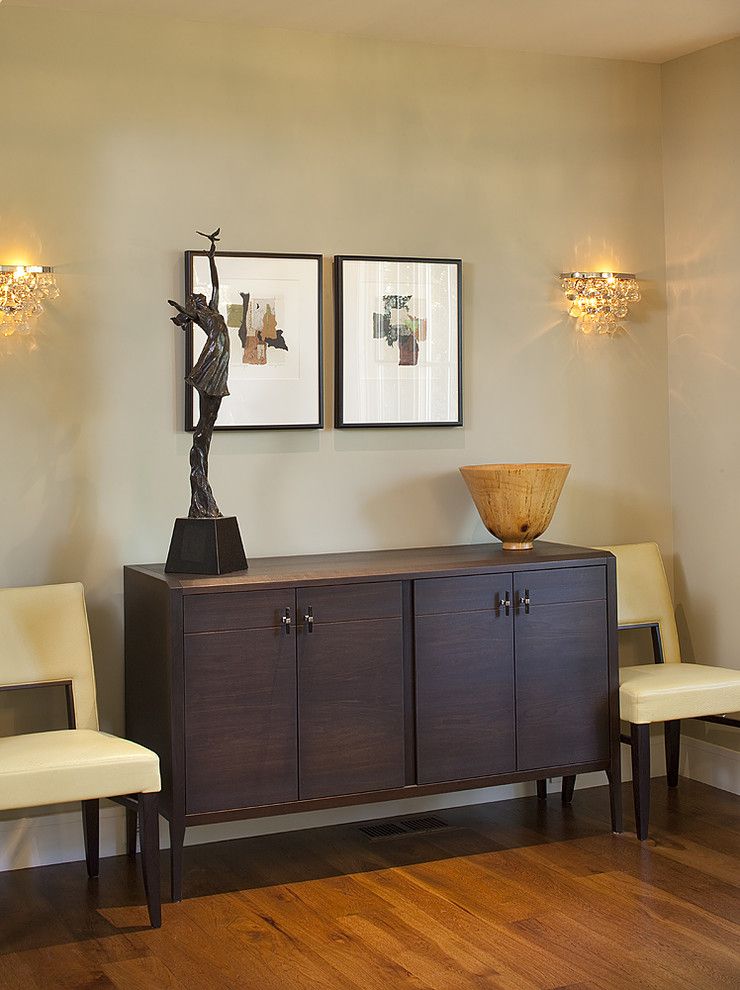
Continuing the theme - a dining area in a classic style. In addition to the central chandelier, sconces are used, which is not so common. But here they are needed to highlight the center of the composition - the picture on the wall.
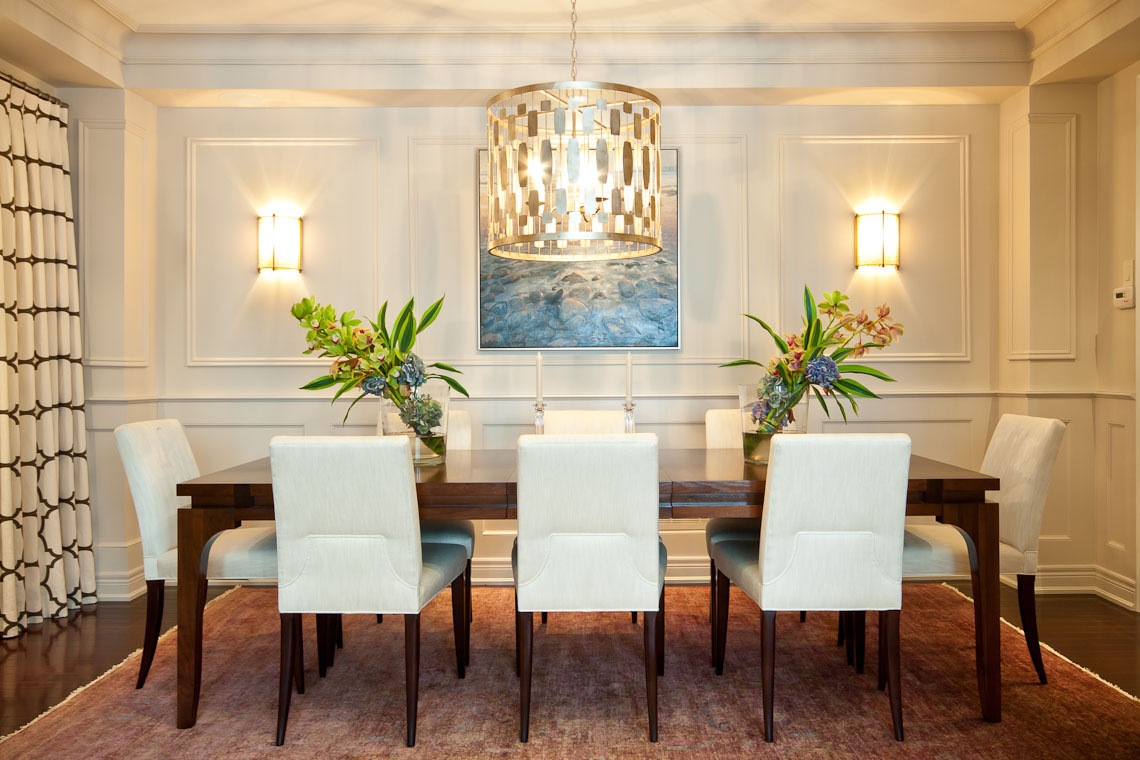
In conclusion - the dining area in the living room, in which wall lamps play an exclusively decorative role. They emphasize the wild stone finish, which, in combination with other design elements, creates an eco-style corner.

Bedroom
If you use not table lamps on the bedside table, but a sconce over the bed in the bedroom, then this will not only “unload” the surface of the nightstand. Such lighting is more readable, not to mention the wider possibilities of wall lamps.
For example, in this photo they create a spectacular "frame" for the picture and perfectly complement it in a decorative way.

There are times when table lamp just nowhere to put next to the bed. As in this family room in a country boarding house for sleeping places on the second tier.
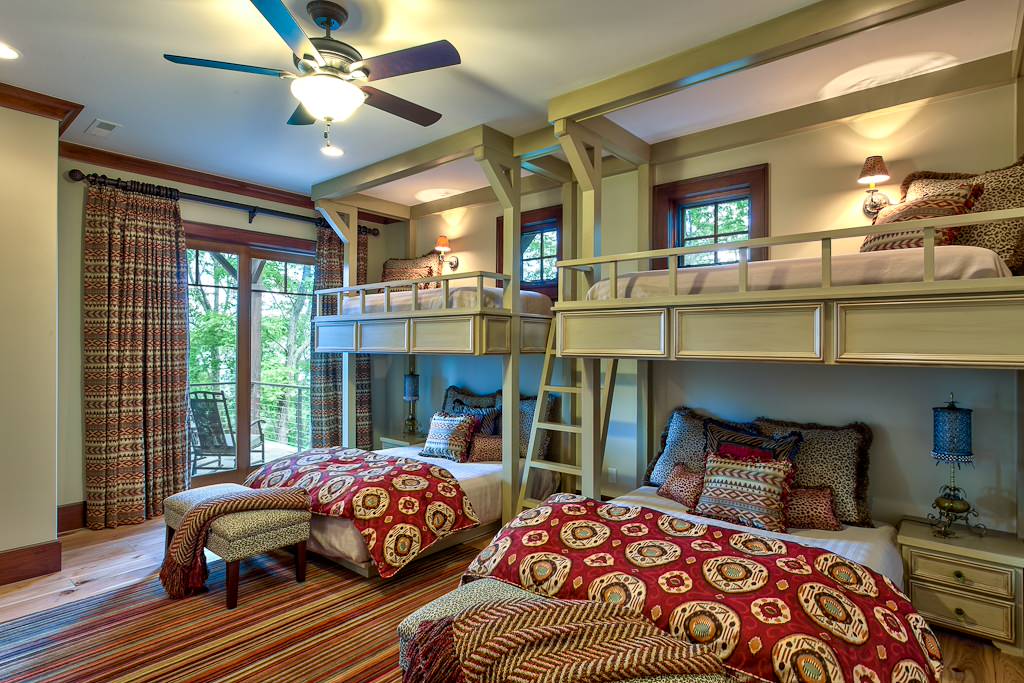
And in this case, instead of a pedestal, there is a luxurious design installed in the interior. On the shelves it is possible to place only a decorative night light, and the light source for each bed is a sconce with an adjustable light direction.

There are bedroom suites, which, in principle, do not provide for the acquisition of cabinets. Their role can be played by niches with open shelves in the headboard. But even here there is a way out - a wall lamp attached to the very back.
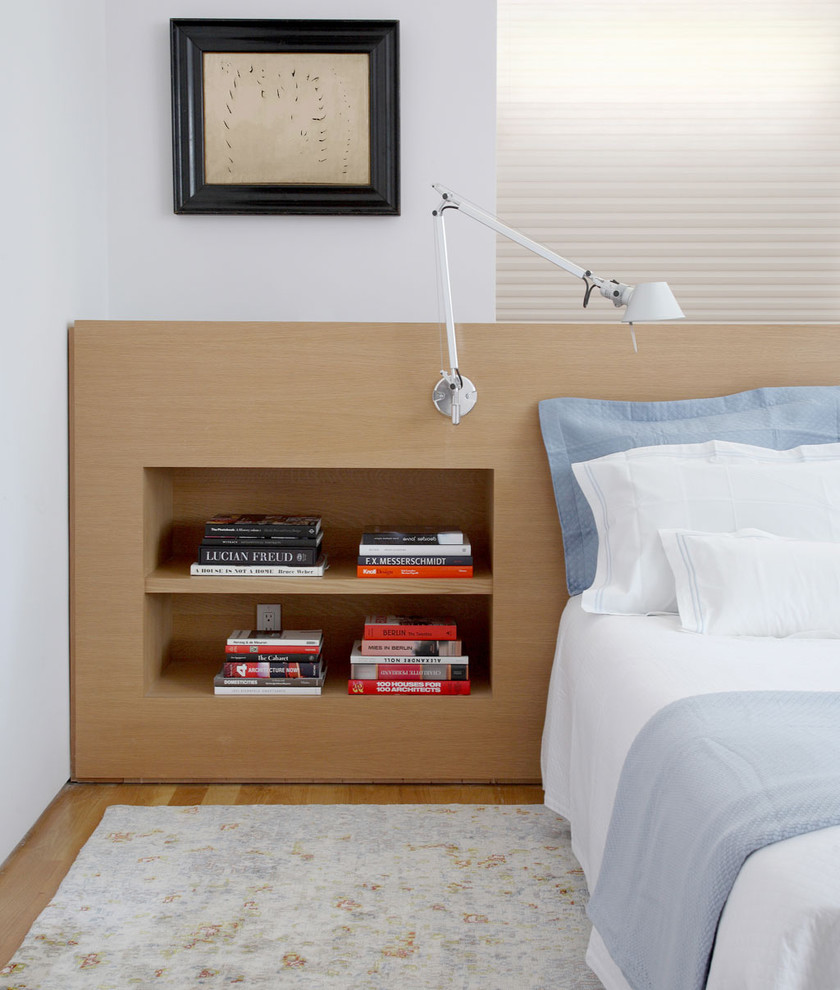
In this version, an antique chest is used instead of a cabinet. Of course, often you don’t have to open it, so the books just lie on the lid and there is simply no place for the lamp.
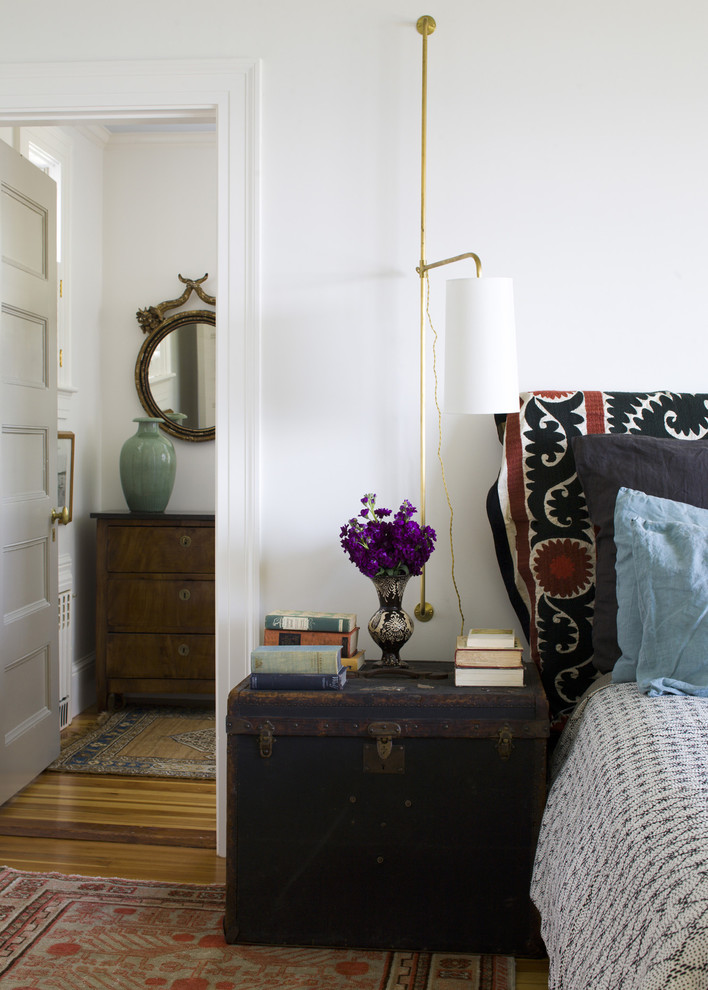
And this is how you can use a sconce in an industrial interior. A double "exclamation point" on a black background next to a painting where the famous expression "just another thing hanging overhead" is written on a white background of a rough surface. Such a visual enhancement of this fatal inscription.
![]()
Laconic modern interior in black and white. Perfect in every detail. As it should be in this style of struggle and unity of the two principles that these colors represent.
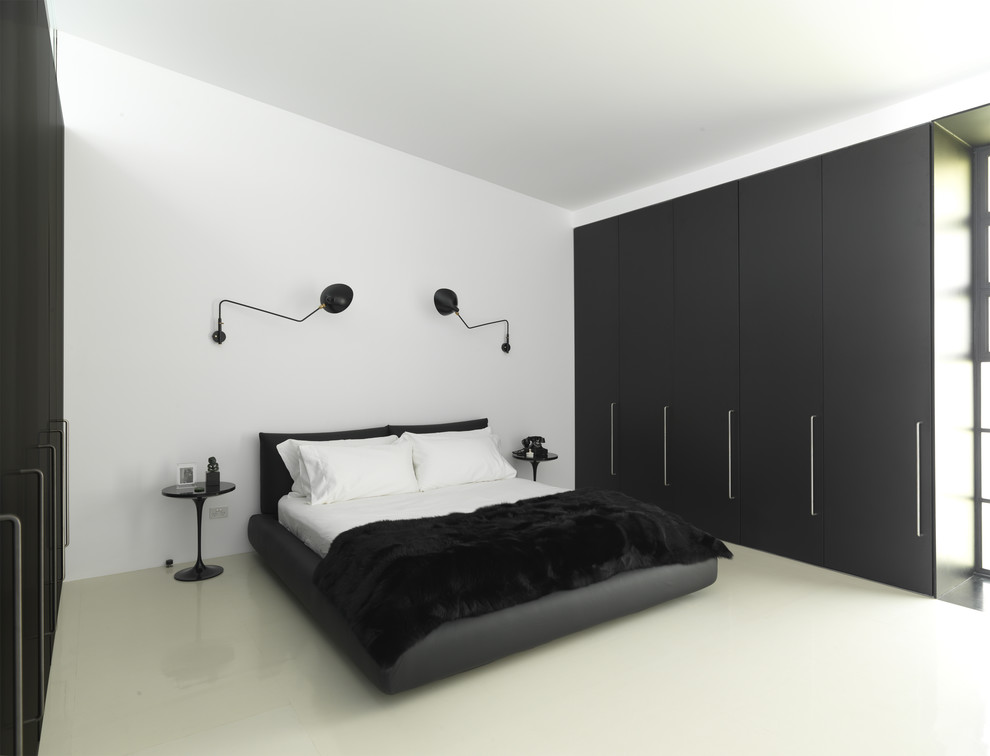
Bathroom
Wall sconces in the bathroom are a must-have in this space. Regardless of the style, there simply isn't enough light from shared fixtures without them.
In a classic Victorian luxury bathroom, sconces and sconces should have lavish décor.

And this is another example of a traditional interior, but in a more modest design. Although the lamps are made in the form of candles, standing in a glass candelabra.
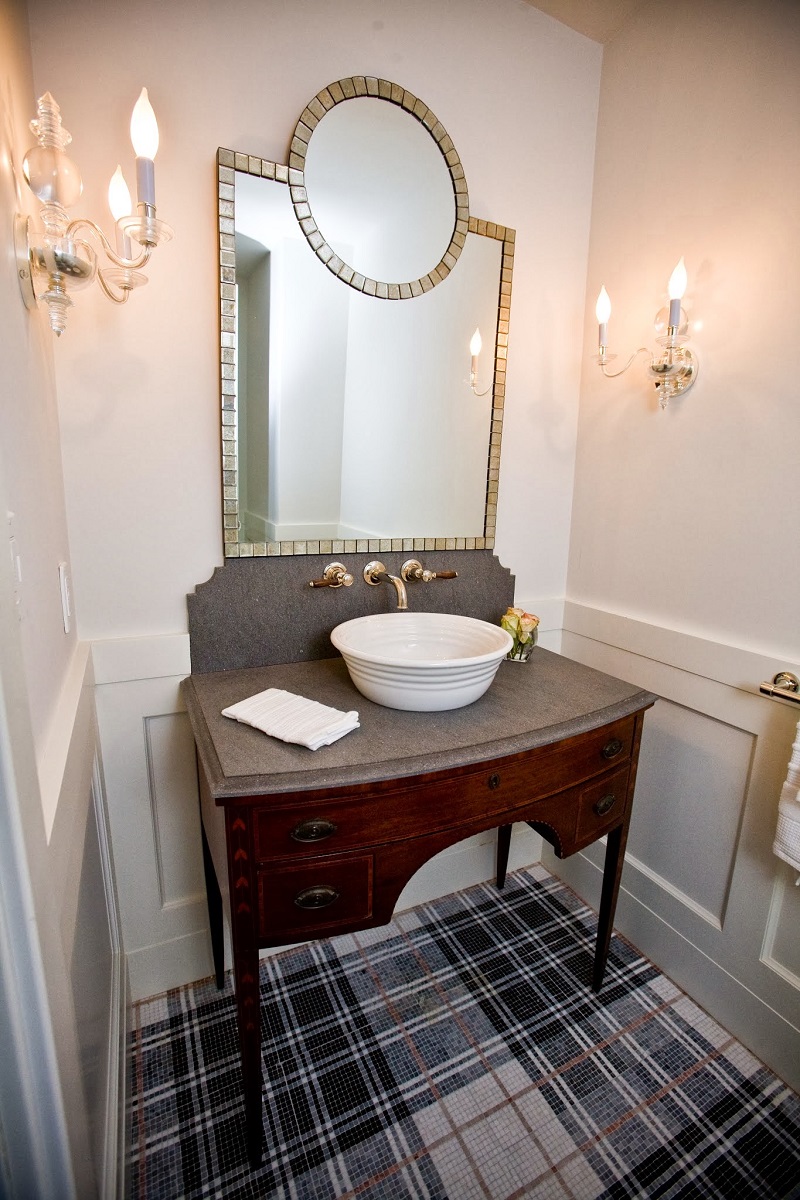
The classic style is multifaceted. In the next photo, the antique order of the shell shape is emphasized by the straight lines of the mirror and cabinets. The composition is completed by a symmetrical arrangement of simple sconces.

Symmetry is, of course, the most common arrangement of sconces in the bathroom mirror area. But this is not a dogma. Here is a bathroom in the Art Nouveau style is content with one lamp. And as a "counterweight" to it, an additional mirror was installed on the console "accordion".
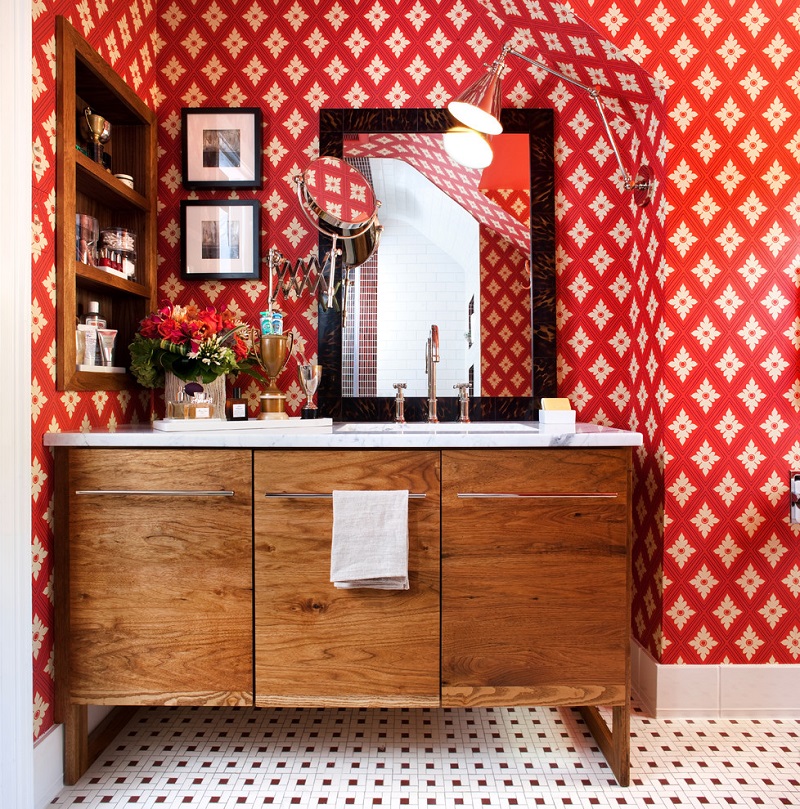
And in this case, the principle of symmetry is violated. Three red wall lights illuminate a double vanity sink in a modern interior.
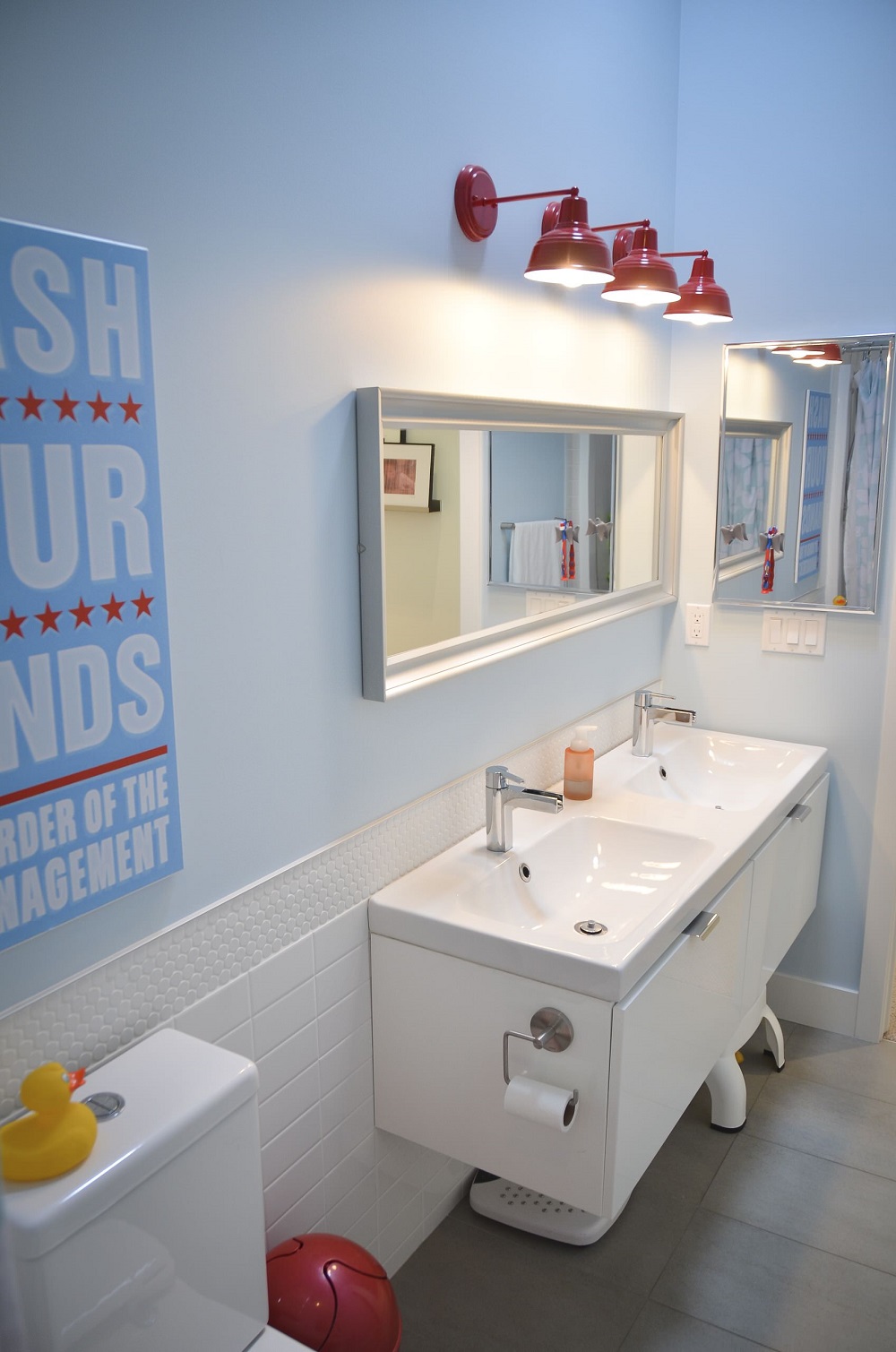
The sconce can be attached not only to the wall. A large mirror makes the room visually spacious, but does not leave room on the wall for other elements. Therefore, the lamps have to be mounted on glass.

Great interior in retro style. A green tub of a copper basin of a washbasin, an antique pedestal and modern vintage lamps as a base. A colorful bathroom in a country house.

Of course, the following photo is typical "handmade", which is impossible to imagine in a city apartment. But such a "joke" of the designer is appropriate in a small wooden cottage.

Children's room
it game Zone, study area and bedroom. Therefore, wall lamps in the nursery are also in demand, as elsewhere.
These cute "children's" sconces in the form of large light bulbs are very attractive in a bright interior.
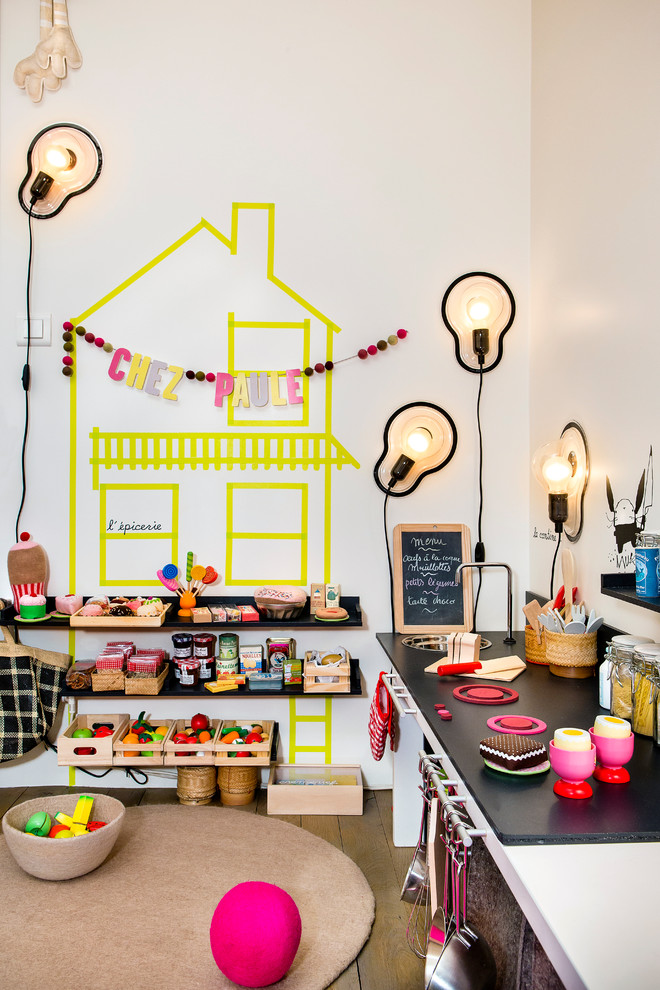
And this is a night lamp in the form of a flower. It will help the child fall asleep without annoying bright light.
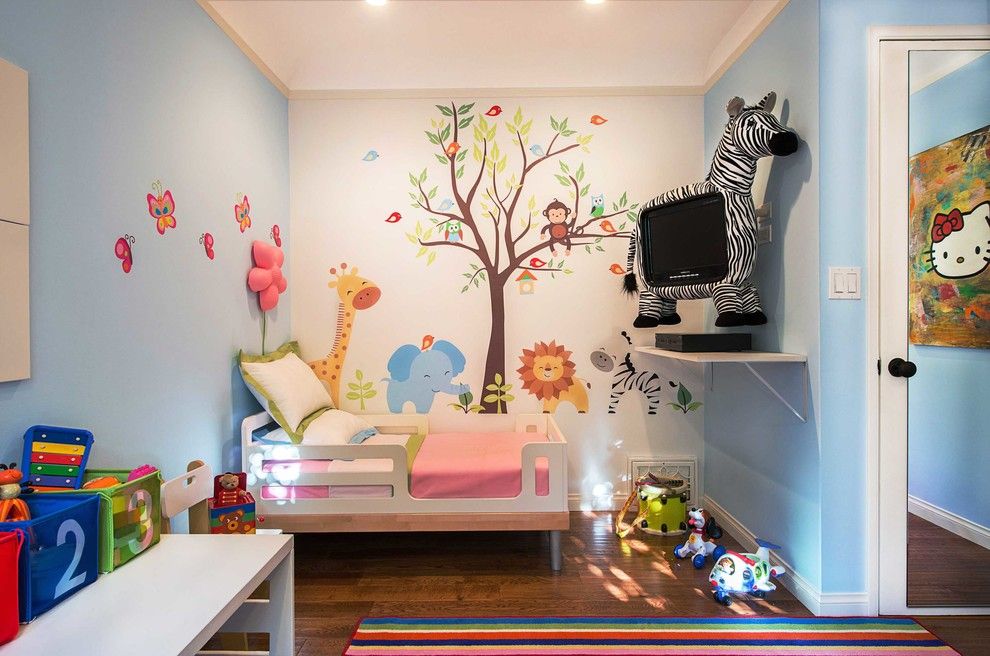
A play area for a little girl, which is another "children's room" for her favorite dolls.

The very appearance of this lamp leaves no doubt that it belongs to the “children's” category.
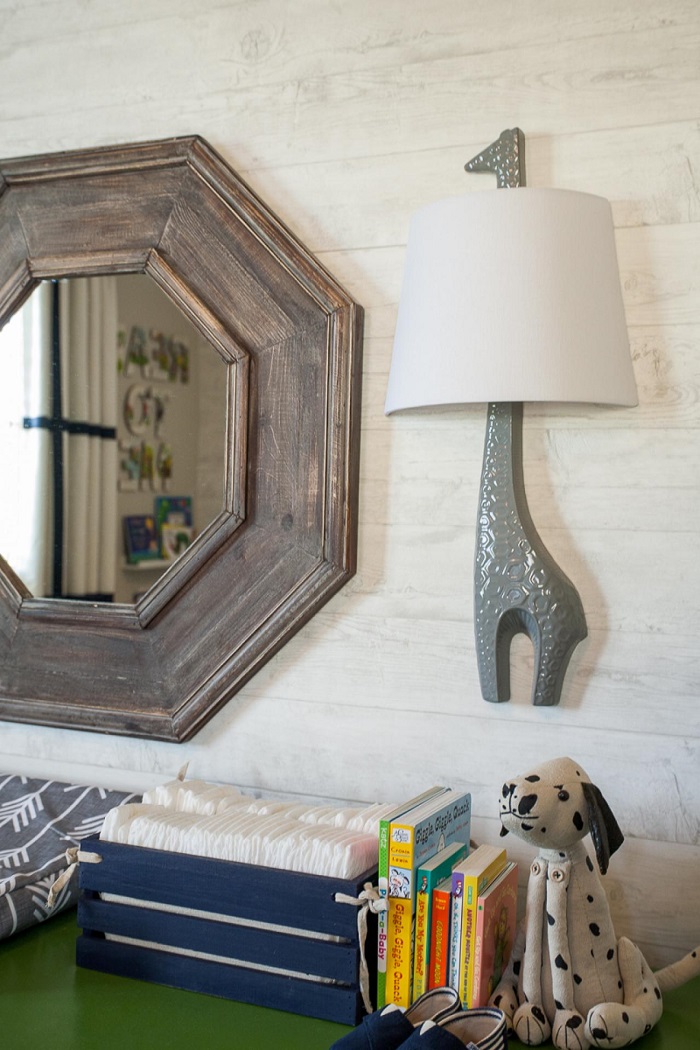
Two examples of sleeping places for schoolchildren who like to read before bed.
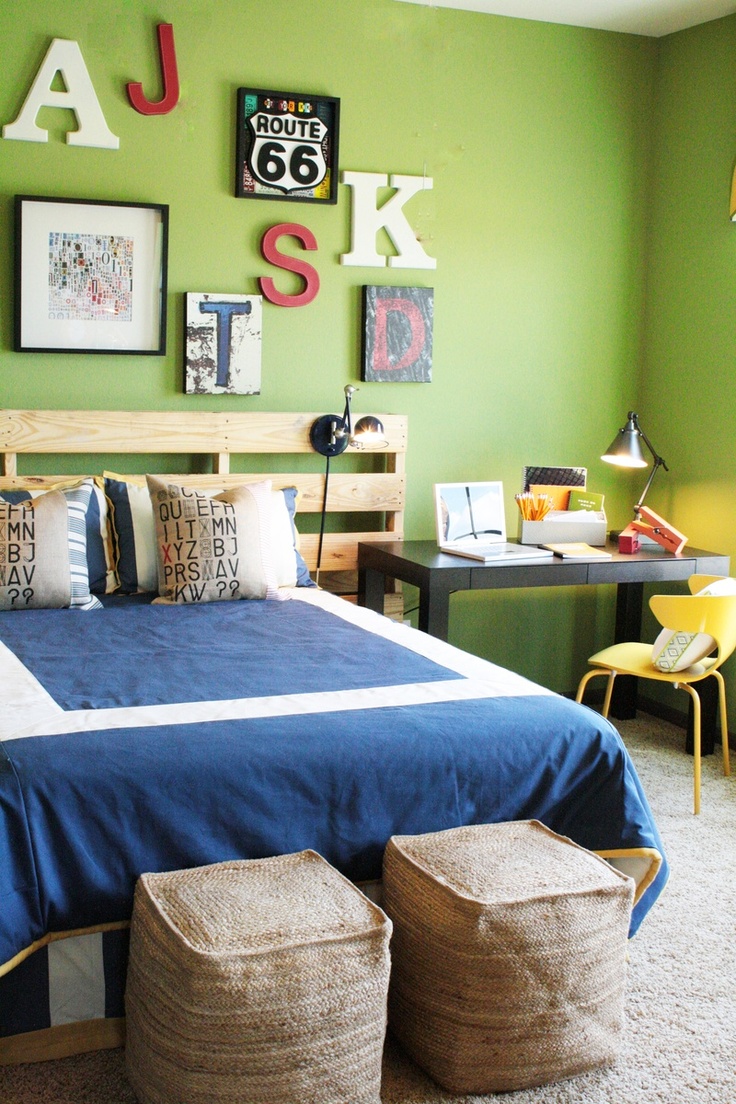
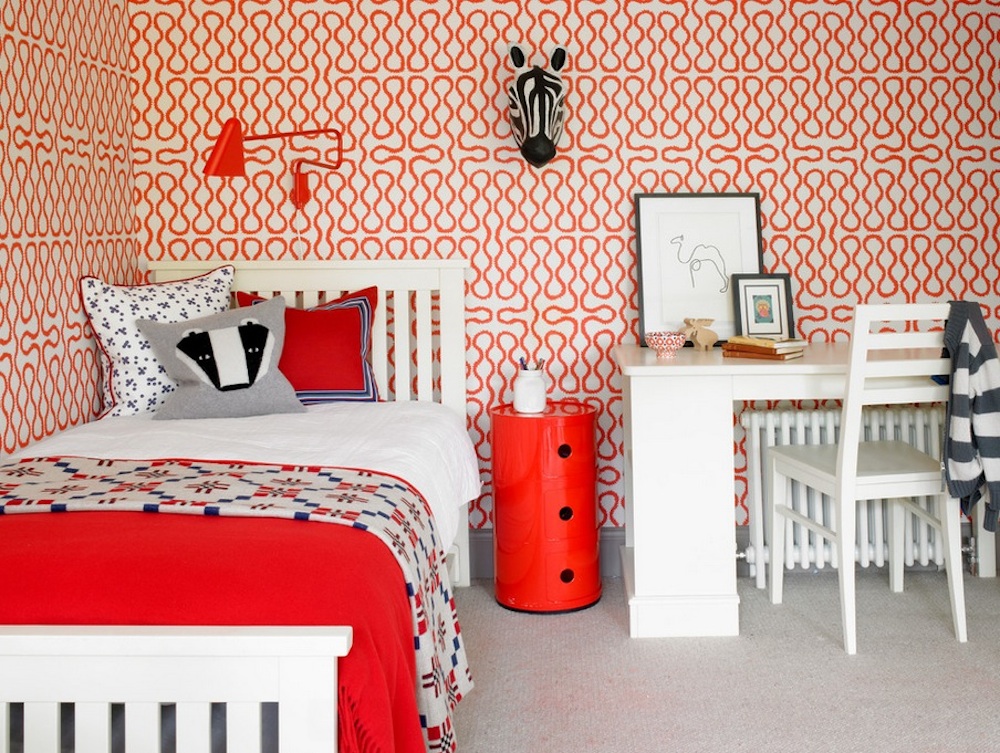
The "home office" for high school students can also be equipped with wall lights.
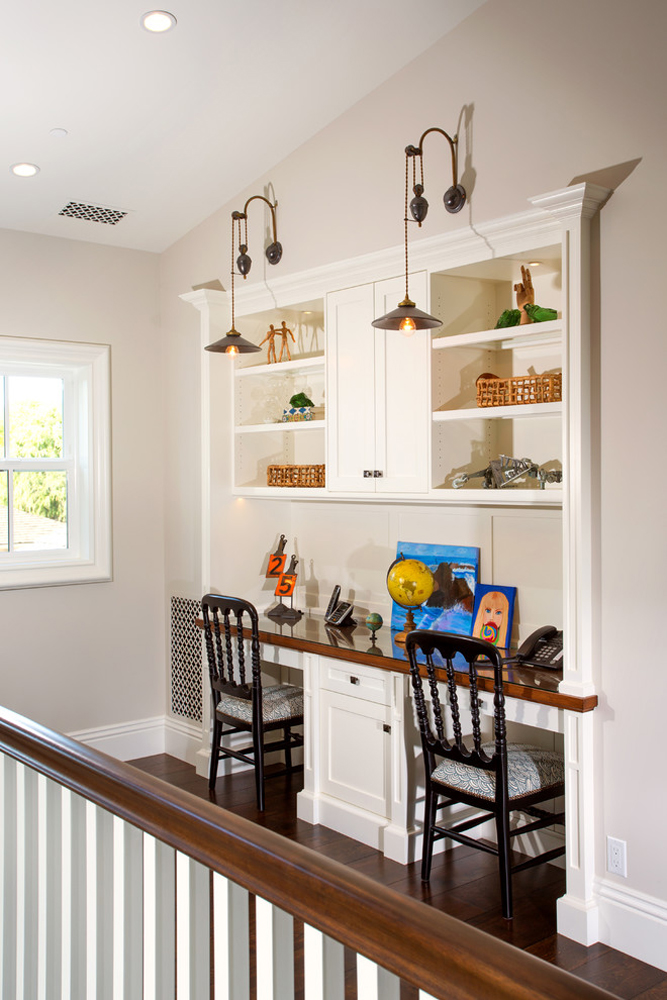
Gallery temporarily unavailable...
If in Soviet times only a ceiling chandelier was almost the only source of light in a room, today, along with traditional lighting fixtures, designers widely use wall sconces. The use of such lamps in the interior opens up great opportunities for the designer, because wall sconces can become not only an indispensable source of artificial light, but also solve a number of design problems. What are the sconces and how best to use them in the interior of different rooms, today the Dream House will show its readers.
Wall sconces: types and purpose
Sconce lamps are lighting devices that are installed directly on the wall with the help of special brackets. Such lamps have many advantages: they are easy to install, do not require special care, but most importantly, they can be used not only as sources of artificial light, but also as decorative elements.
Most often, wall lamps are used to enhance lighting in a specific area of \u200b\u200bthe room or zoning the room. For example, if you install a wall lamp near a sofa or bed, this will not only allow you to designate a seating area, but also make reading as comfortable as possible.
With the help of wall sconces, one or another piece of decor can be emphasized. So, it is sconces that are most often used for artistic illumination of vases, figurines, canvases or collectibles. And what about the decorative role of such lighting fixtures ?! A well-chosen and skillfully executed wall lamp can create a spectacular ensemble with a ceiling chandelier or emphasize the chosen style of the interior.
Today, the range of wall sconces is so large that you can seriously get confused. All of them differ in design, texture, shape, color scheme, size and, of course, price.
According to the type of design, wall lamps can be divided into three types:
- Sconces mounted on the wall using a special bracket with a lampshade or lampshade attached to it. Such models are highly decorative, can have any shape and are suitable for interior design in any style.
- Surface luminaires - models with shades directly attached to the wall. Usually such lamps have shades of oval, round or rectangular shape. Most often, such models are used to illuminate bathrooms and bathrooms. Such lamps are indispensable in rooms decorated in the style of hi-tech, modern, loft or minimalism.
- Models with suspended ceiling (suspended lamps). Like traditional sconces, pendant lights come in a variety of designs and can be used as artificial light sources in any room.
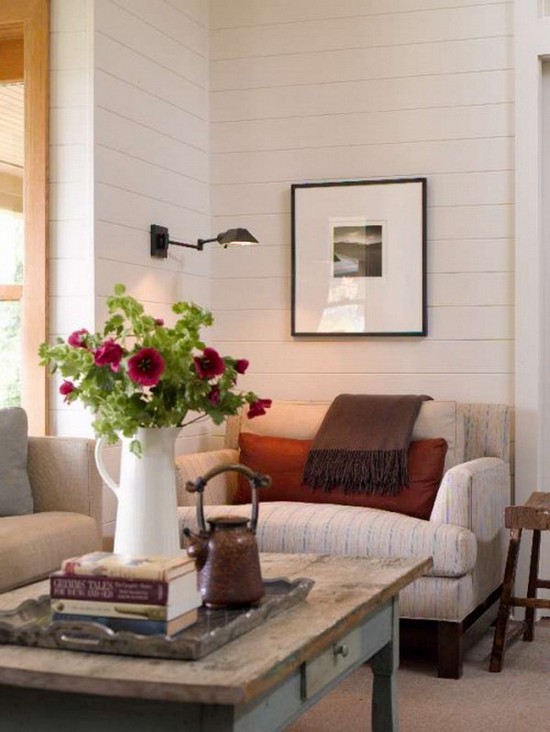
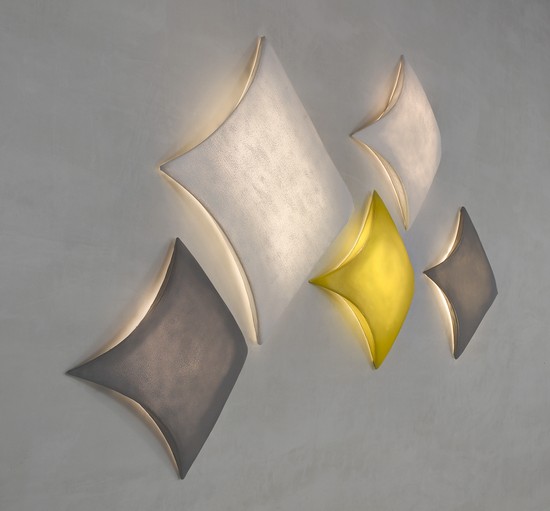


Contrary to popular belief, modern sconces are made not only from traditional materials - glass or plastic, but also from metal, wood, textiles and bamboo.
Equally varied are the designs and shapes of the lamps, which can vary from ordinary round shades to bizarre figures. Heart-shaped wall lamps look unusual and original. Such lamps can add a romantic touch even to the most ordinary interior. But wall lamps, made in the form of a torch or a candle, will recreate the atmosphere of a medieval castle. In a word, the shape and design of modern wall lamps today amaze the imagination with its diversity.

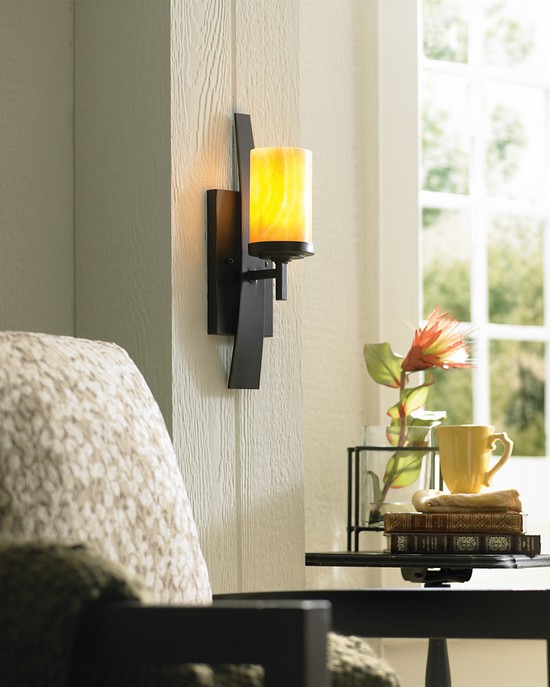
Sconce wall lamps


Wall lamps in the interior photo

Sconce lamps wall photo
Proper use of wall lamps in the interior
Traditionally, wall lamps are classified as local light sources and are used along with the main lighting in the premises. However, in some cases they are the main source of light, which is typical for small rooms, such as hallways and bathrooms.
Wall lamps can become part of the interior in any style. So, round lamps made of mosaic glass will be an excellent addition to an oriental-style room, and discreet steel lamps with white light will perfectly fit into a strict and concise hi-tech.
Sconce lamps can be installed in any room, from the corridor to the nursery, but we will consider the features of their placement in the most sought-after places: the bedroom, bathroom and living room.
Wall sconce for the bedroom
In the interior of the bedroom, sconce lamps not only serve as a source of additional light, but also help create an atmosphere of intimacy. It is with the help of a sconce that you can create soft and subdued lighting that promotes relaxation, which is so necessary for a person departing into the world of sleep.
The use of sconces in the interior of the bedroom opens up great opportunities for the designer: by choosing the lamps of the desired shape and size, you can favorably emphasize the bedside area, visually highlight this or that object, hide wall imperfections. Traditionally, sconces are installed at the head of the bed or near the dressing table.
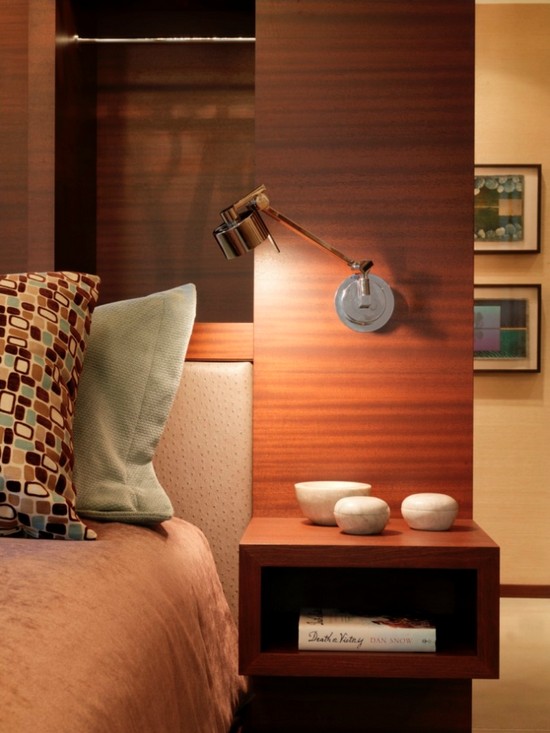
Sconce in the interior of the bedroom photo

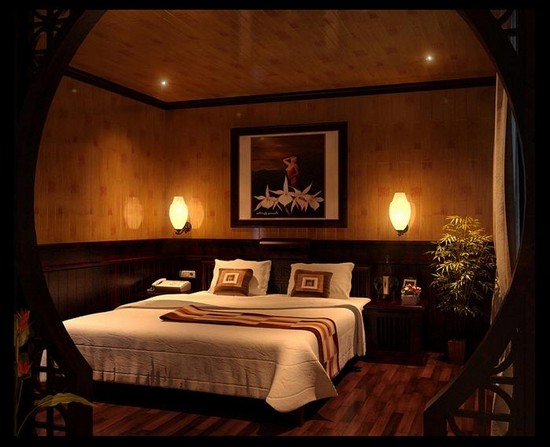
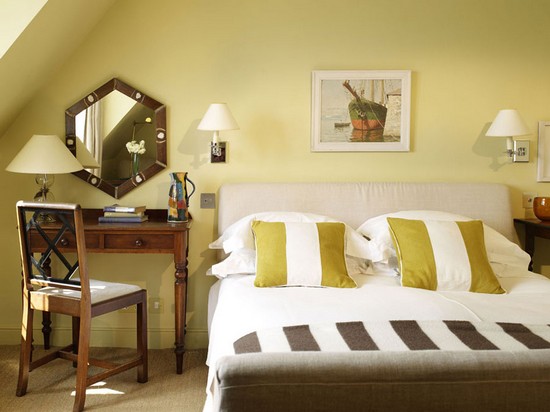
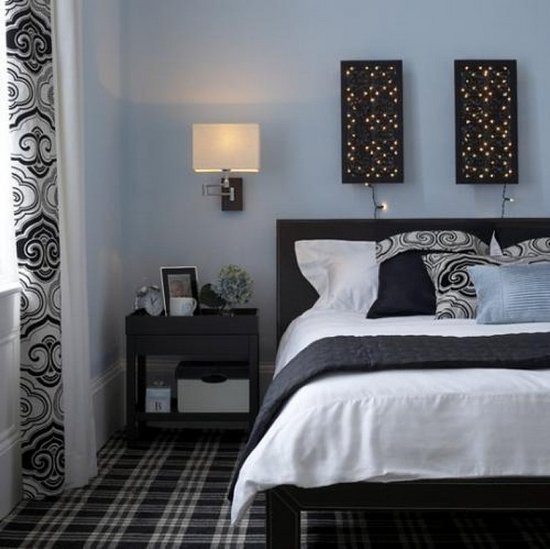
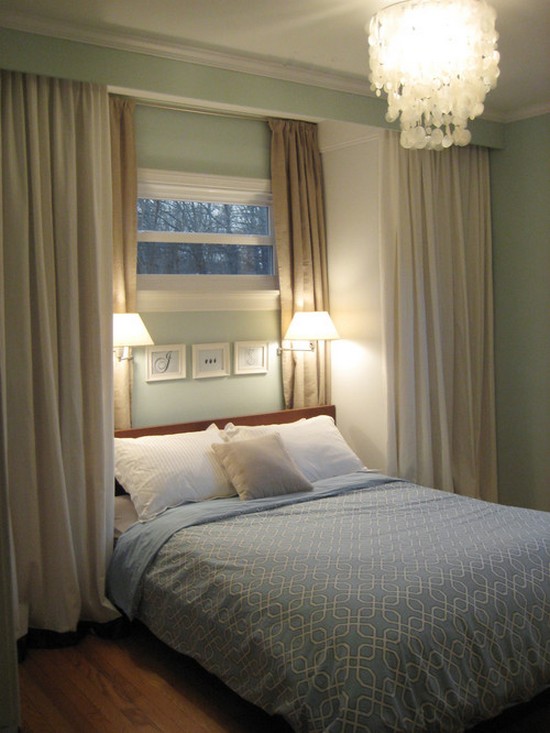

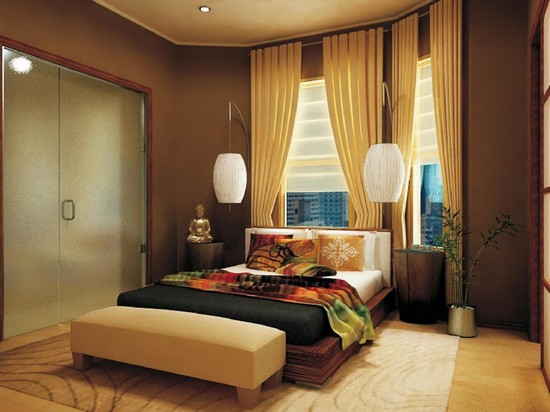
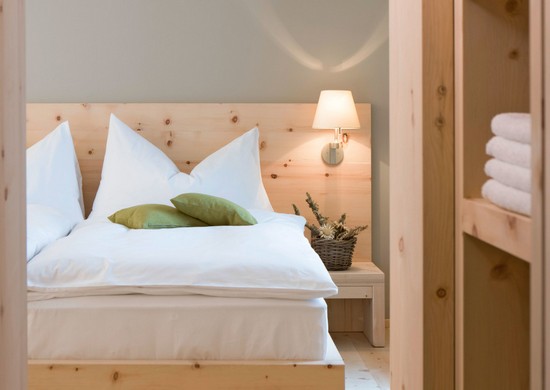
Sconce in the bathroom
Mirror lighting is especially important in the bathroom. Therefore, wall sconces for the bathroom, as a rule, are installed on the sides of the mirror. However, this is far from the only function that sconces perform in this room. Wall lamps in the bathroom, however, as in any other living space, will help highlight the most significant areas and become an excellent replacement for the traditional chandelier. In addition, the use of sconces in bathroom lighting allows you to enrich and complicate the overall style of the room.

Sconce in the bathroom
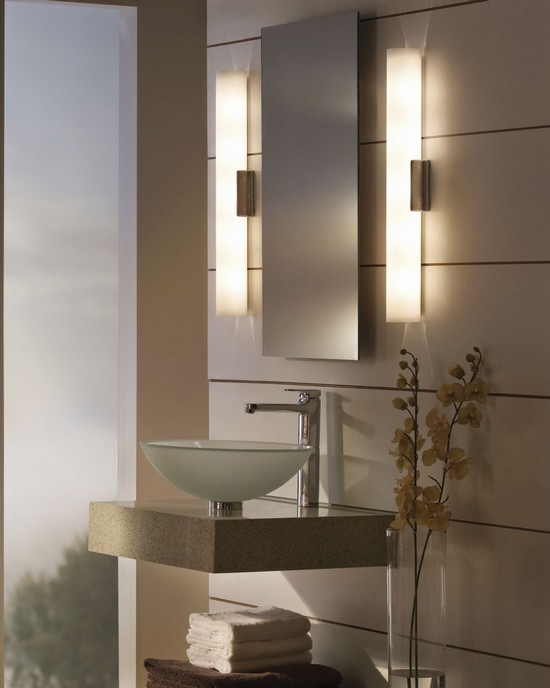
Bathroom mirror sconce
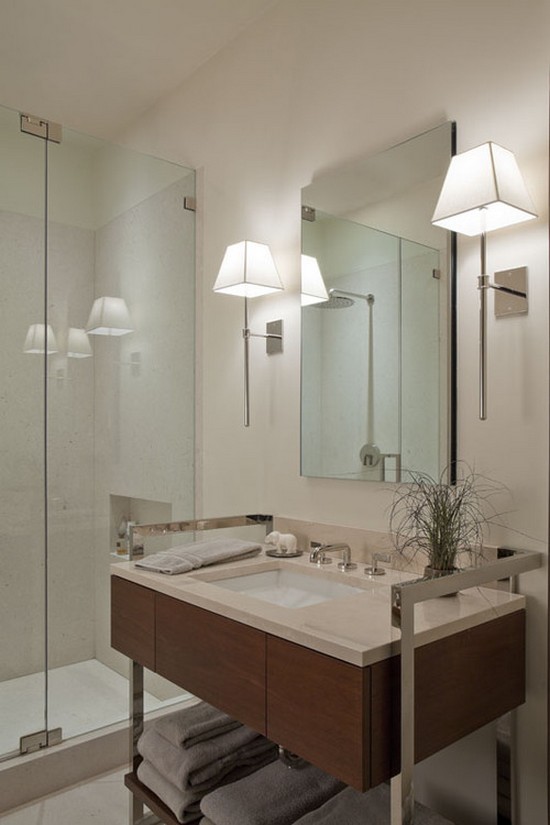
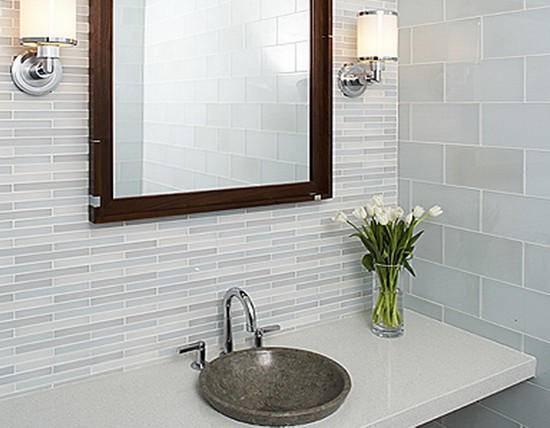
Bathroom sconce
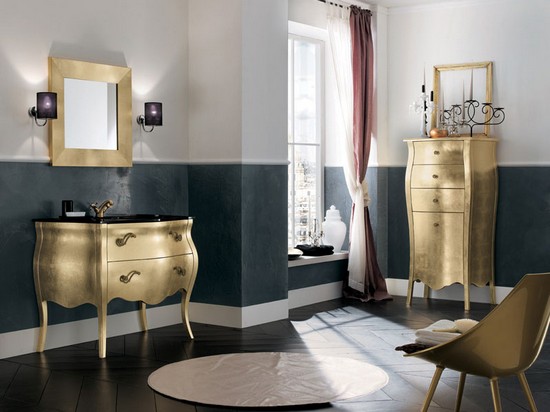
Sconce in the bathroom photo

Sconce for bathroom photo

Sconce for living room
In recent years, wall lamps have found wide application not only in bedrooms and bathrooms, but also in living rooms. Modern designers use sconces in the living room to give the interior a certain rhythm and achieve harmonious lighting of the room.
Wall sconces in the interior of the living room can be a spectacular addition to the main lighting and one of the decorative elements. In addition, if you attach such lamps above a sofa, bar counter or fireplace, you can visually highlight the seating area and place the necessary accents in the interior.

Sconce in the living room photo

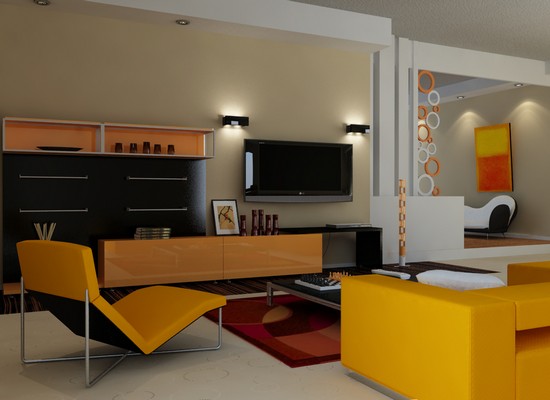
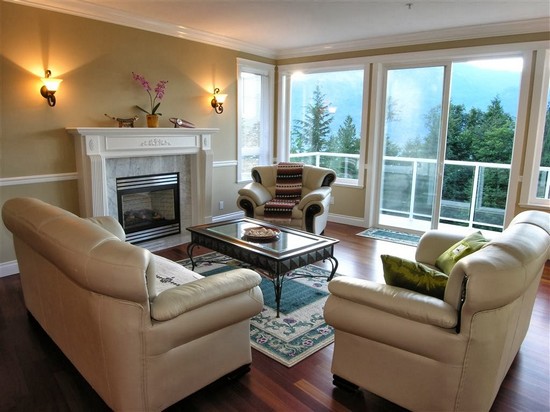
Sconce in the interior of the living room photo
Little tricks when placing wall sconces
In order for wall lamps to become a harmonious part of the created interior, you need to know a few rules for their placement:
- if the sconce lamp is installed at a height of 2 meters, then its light will spread to most of the room;
- to create a more festive atmosphere and get more light, it is worth hanging a lamp at the top of the wall at ceiling level;
- a sconce installed closer to the floor will allow you to get subdued lighting and create a mysterious and romantic atmosphere;
- to visually expand the narrow space in the corridor or bathroom, it is worth fixing several sconces in a row, on the same level.

The first wall lamp appeared in those distant times, when a man stuck a burning torch between the stones in his cave. Torches were replaced by candles, which at the end of the 19th century gradually replaced electric lamps. Sconces (wall lamps) have come a long way of evolution, and now with their help they not only improve the lighting of rooms, but also solve a number of design problems. We will share with you the secrets of placing sconces in various rooms.
Wall lamps and their varieties

The French word "bra" (bras) means "hand". In fact: he extended his hand - and the lamp was turned on! Sconces became especially popular in the 17th century, when chandeliers were replaced by lamps made of bronze, copper, and glass. The advent of electricity was the impetus for the manufacture of sconces of various types.
To date, the range of wall lamps is very wide. With their help, you can highlight significant objects in the interior, divide the room into zones, increase the illumination of the room. In addition, original sconces can act as an independent piece of decor.
Sconces are easy to install and maintain. They are conditionally divided into several types:
- . The luminaire is structurally tightly pressed against the wall. Most often these are reflected light fixtures. Such models are stylistically universal, diverse in shape, color, texture and size.
- . Models are diverse in design and materials. Sometimes a group of plafonds is placed on one common base: this design looks very original and creates good level illumination. Such lamps look interesting in interiors of different styles. Sometimes sconces are made in the form.
- - sconces without a shade, often an imitation of candles. Perfect for classical, baroque or rococo interiors, for example, crystal wall sconces.
- and adjustable base. These models can be controlled by pointing to the right place. Directional sconces are great for high-tech interiors. Very handy near mirrors, in reading areas. An example of such a lamp is a base with a lampshade that rotates freely.
How to choose a wall lamp?

To make the sconce a truly beautiful, appropriate and functional element of the interior, ask yourself a few questions:
- in which room do you want to place the sconce?
- what is the general style of this room and its dimensions?
- how many lighting fixtures are already in the room, what are they?
- How many windows are in the room and where are they located?
- What is the original purpose of placing the sconce: lighting or decor?
- what is the humidity level in the room?
Answers to the questions will form the parameters of the lamp that suits you: size, color, shape, material, number of light sources, power, degree of protection. Let's dwell on the choice of sconces for each particular room.
Wall lamp for bedroom and nursery

In bedrooms and nurseries, lamps are appropriate, giving a soft, diffused light. Such lighting helps to relax, prepare for sleep. Models with a dense lampshade, matte shades look great here. It is not recommended to place crystal and glass lamps in the nursery, so that the child could not get hurt if the lamp breaks.
It is very convenient if the brightness of the lighting can be changed if desired, changing the chamber light to a brighter and more readable one. In the children's bedroom, a weak wall-mounted night light can be lit all night so that the child is not afraid to sleep. Good to use for nights LED lamp because they use less electricity.
Traditionally, sconces in the bedroom are placed at the head: one sconce on each side of a double bed, or one lamp on the side of a single bed. In the nursery, a lamp near the armchair is convenient, where a fairy tale is read to the child before going to bed. It is important that the person sitting in the chair can turn on the sconce without getting up.
A sconce in the bedroom will decorate and add functionality to the bedside area, create accents in the interior. Wall lamps are convenient because they do not take up space on the bedside table, leaving it for the necessary things: books, a glass of milk and flowers.
Wall lamps in the living room and study

In the living room and study, sconces set the pace for the interior and organize the space. Part of the room, highlighted by a pair of symmetrically placed sconces, acquires special significance and integrity. As a rule, they try to highlight the area by the fireplace or other significant decorative elements, focus on the bar counter. Sconces located on either side of the sofa create a cozy seating area.
In the living room, sconces are most often placed solely for decorative purposes. An interesting composition is created by paired lamps above symmetrical pieces of furniture, sconces in wall niches, between windows.
Modern designers are increasingly using sconces to decorate living rooms, made in the same style, but with different color schemes. This approach refreshes the room, adds dynamics to it.
Sconces in hallway and bathroom

For small spaces, often bathrooms and hallways, sconces can also be the main source of light. But the traditional role of wall lamps is to illuminate the mirror and the most significant areas. Lamps look very impressive, the design of which repeats some elements of the mirror frame.
The increased humidity of the bathroom requires moisture-proof wall lights. Think about the combination of plumbing materials and fixtures.
Too bright lighting should not be created in the hallway: a person enters this room after the street or the entrance, and the light hitting the eyes can cause discomfort. If the corridor is long, a row of identical sconces will enliven its walls.
Little tricks

- It is convenient to buy a sconce and a chandelier from the same series: this is a guarantee of high-quality multi-level lighting and saves time when choosing stylistically suitable lamps.
- Wall lights help to zone the room. Use sconces mounted symmetrically on matching walls.
- The lower the lighting, the calmer and more romantic the lighting.
- The narrow space visually expands the sequence of identical sconces. Such fixtures should be compact enough not to cause inconvenience. In a spacious and wide room, sconces can be placed both on one and on opposite walls.
- Do not place the sconce directly in front of the TV, otherwise the screen will glare. Place the device, leaving a few centimeters on each side (depending on the light spot of the lamp, usually 50 cm) from the projection of the screen on the wall.
A well-chosen wall lamp can add coziness to any room. The options for using sconces in the interior are innumerable, and using the materials of our blog, you can try to apply your knowledge in lighting design. and get new articles straight to your inbox!





